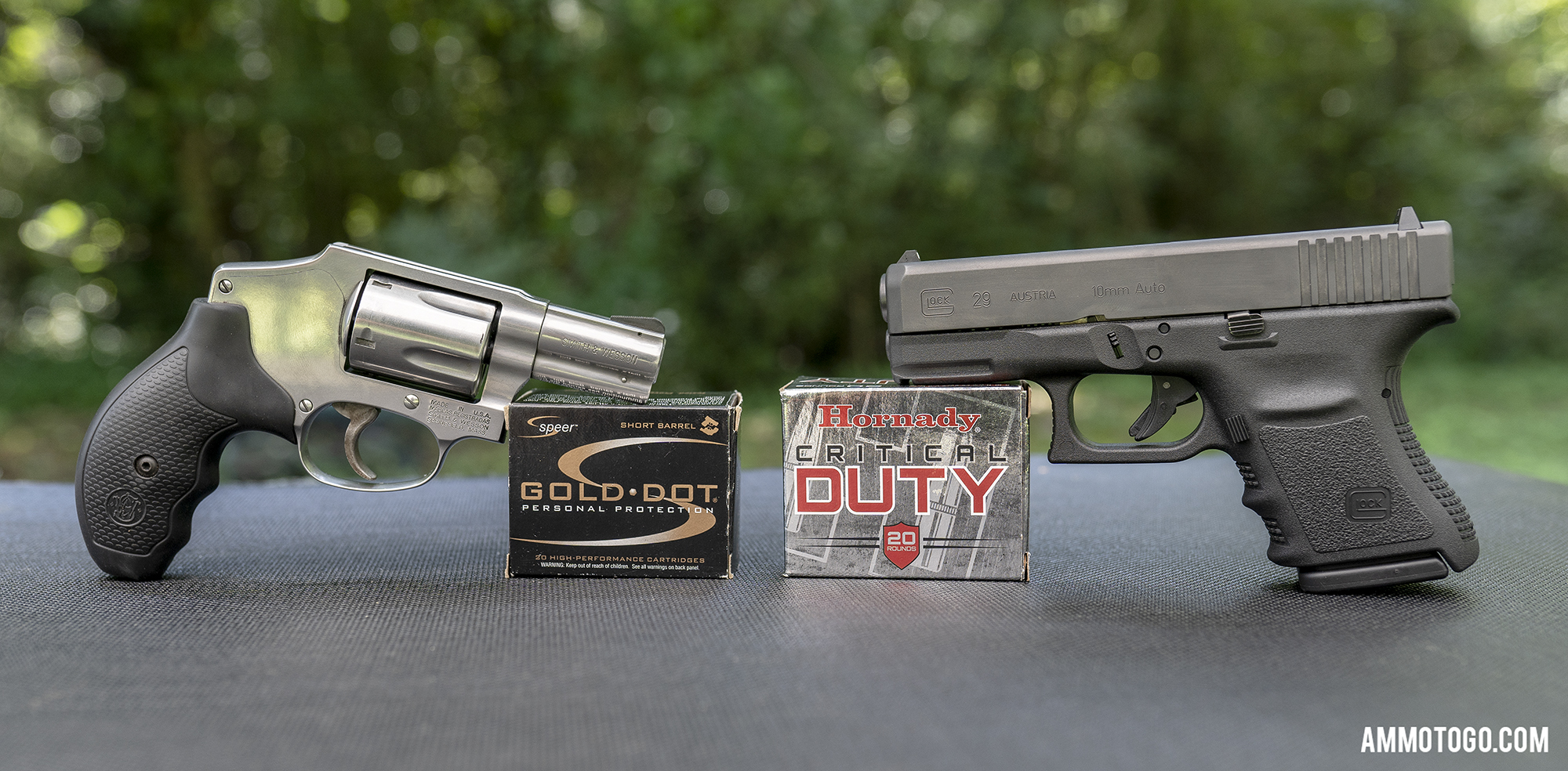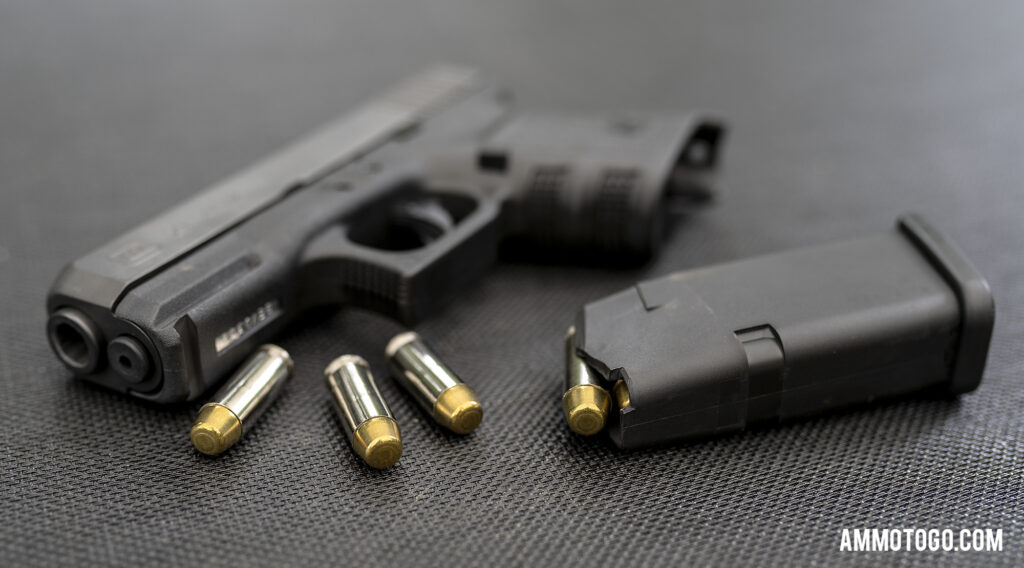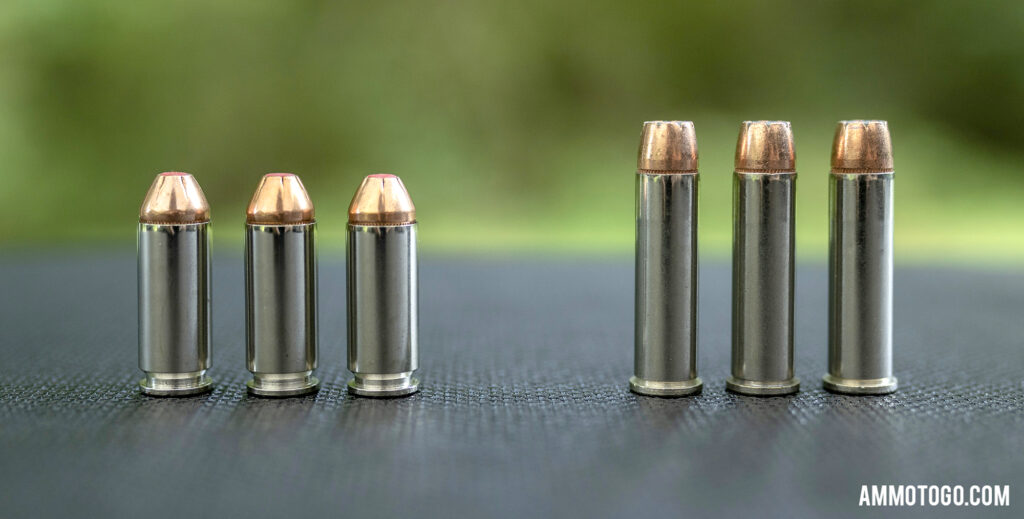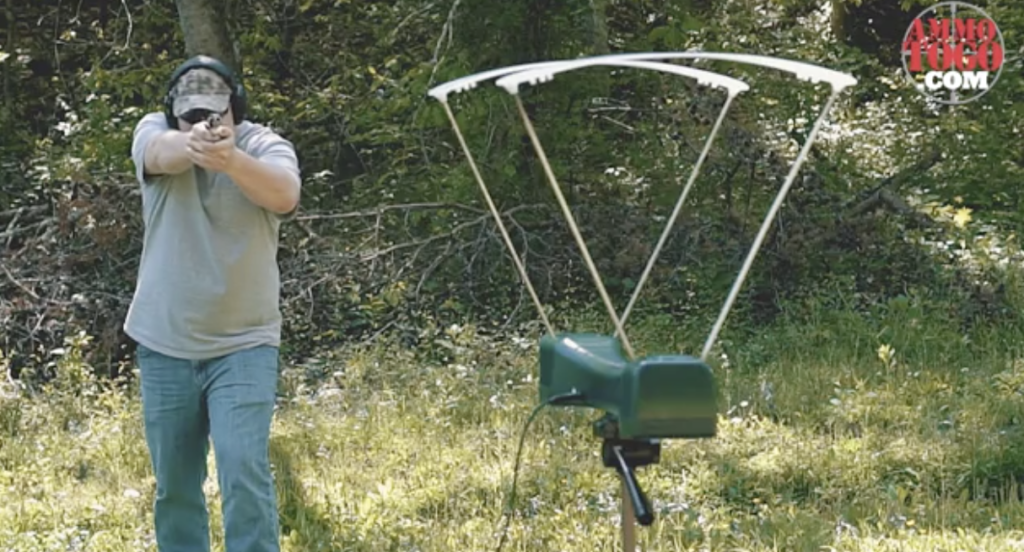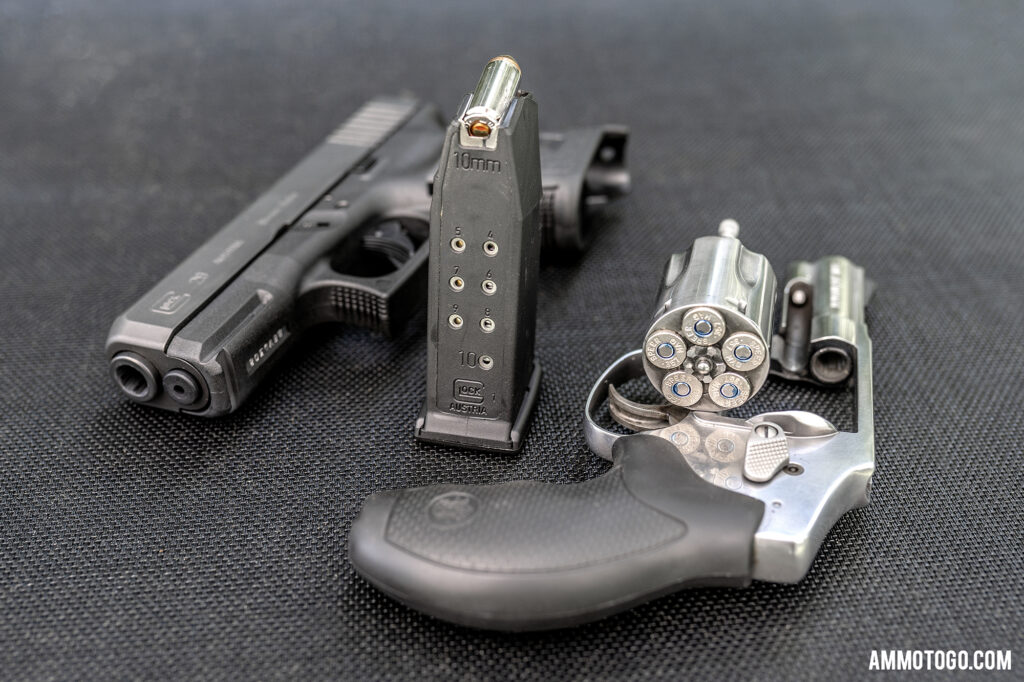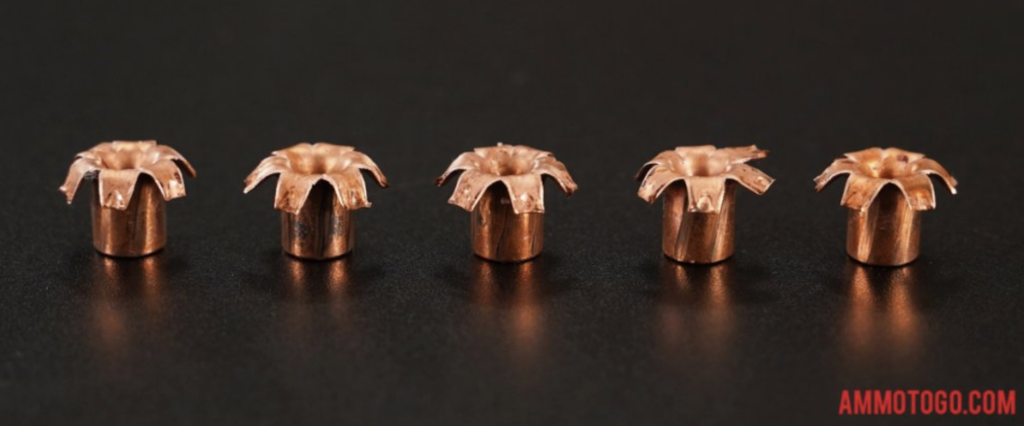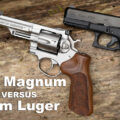Both the 357 magnum and the 10mm have earned a place in the hearts of self-defense shooters in America. But there are some big differences between the two calibers. So, what separates the 357 magnum vs. 10mm cartridge and why would you pick one over the other?
Getting to Know the .357 Magnum
The .357 Magnum is one of the most historically significant cartridges in the country. Released in 1935, at the height of of the “gangster era,” this cartridge was intended to give law enforcement greater firepower against well-armed, and well-armored, criminals.
At the time, criminals were using vests, as well as car doors and other protections, to shield themselves against lighter and slower police rounds. The .38-calibers being used by law enforcement were unable to penetrate these barriers, creating the need for more velocity and power.
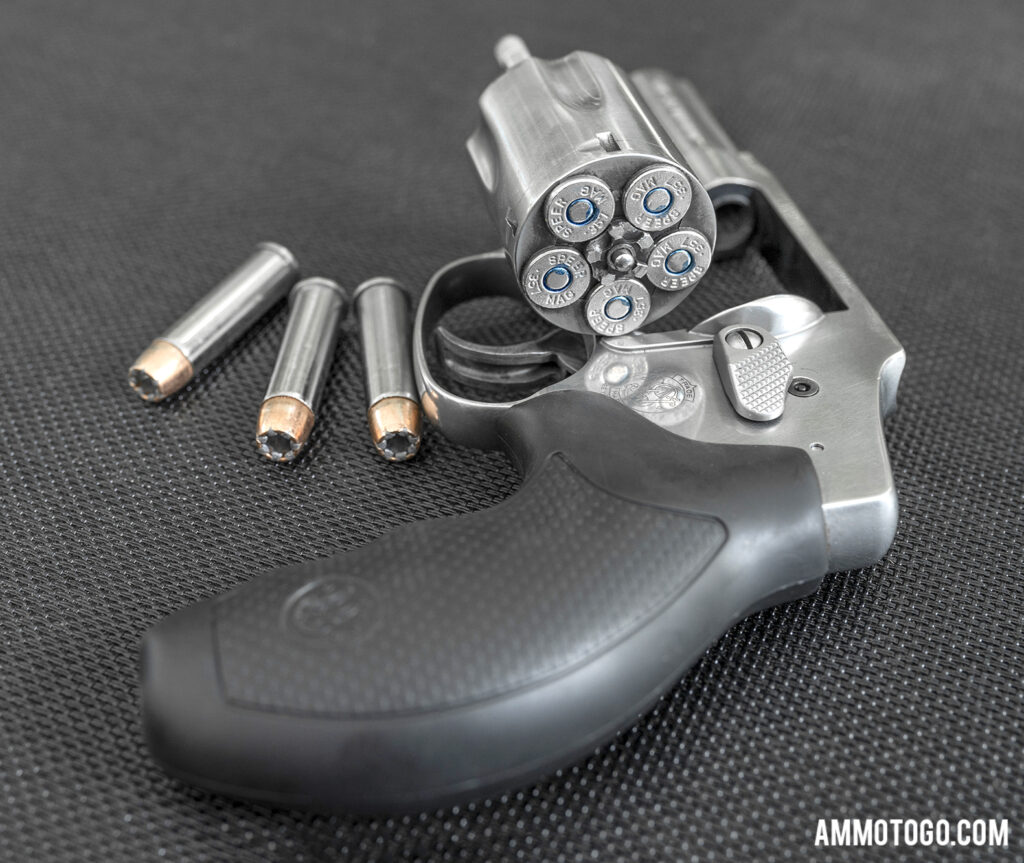
Although there were other slight changes, the .357 Magnum is essentially an elongated .38 Special. With a longer case, the cartridge can pack more force behind the bullet, which creates greater velocity and energy, as well as superior terminal ballistics and trajectories. The result was a stronger weapon for the good guys and a cartridge that has remained extremely popular among the gun-owning public.
Used for hunting, target shooting, and self-defense, the .357 Magnum remains a common sight at gun ranges and hunting grounds across the country.
.357 Magnum Quick Facts:
- Released: 1935
- Bullet Diameter: .357 inches
- Base Diameter: .379 inches
- Neck Diameter: .379 inches
- Case Length: 1.29 inches
- Commonly used in revolvers
Getting to Know the 10mm Auto
Like the .357 Magnum, the 10mm Auto was also adopted by law enforcement to stop dangerous criminals. But in this case, after development it basically sat on the sidelines. After a violent and tragic engagement between FBI agents and bank robbers, the cartridge was given new attention and adopted by federal organizations.
Although the cartridge had been released six years earlier, the 1986 shootout between FBI agents and bank robbers in Miami created a new need for the 10mm Auto. After the shootout, which left two agents dead, authorities determined that if the agents had been using more powerful weaponry, the shootout would have likely ended before two agents were killed. This led to the adoption, as well as the adaptation, of the 10mm Auto cartridge.
The 10mm Auto is a cartridge designed specifically for semiautomatic pistols, one of the main reasons it was adopted by the FBI and other law enforcement agencies. It generally carries a bullet ranging from 150 to 200 grains, although larger bullets are available. It does not have the massive overall adoption among private users, making it one of the most underrated cartridges in the American collection.
10mm Auto Quick Facts:
- Released: 1983
- Bullet Diameter: .4 inches
- Base Diameter: .425 inches
- Neck Diameter: .423 inches
- Case Length: .992 inches
- Designed specifically for semiautomatic pistols
10mm Auto vs .357 Mag
357 Magnum vs. 10mm Price
While some put more importance on it than others, price-per-round is an essential consideration for any gun owner. When selecting a firearm, you need to consider the cost of shooting the cartridges, as this can impact how often you use the weapon for target practice.
When this article was written, the lowest per-round cost for a .357 Magnum ammo was $.24, while 10mm ammunition could be purchased for as low as $.32 per round. At the high end, the most expensive .357 Mag was $1.90, while the most expensive 10mm Auto round was $1.50.
With either one of these cartridges, you can find numerous options that overlap in price. For this reason, it’s almost impossible to name a winner in overall costs.
Winner: Draw
10mm vs. 357 Magnum Velocity
When it comes to muzzle velocity, there is so much overlap in performance that, once again, naming a champion is incredibly difficult.
Overall, however, we see that the .357 is generally capable of reaching higher velocities because it is usually available with lighter bullets, which will mean a faster velocity assuming the pressures are the same. The .357 is available with bullets as light as 110 grains, which means you can achieve greater velocities, usually approaching 1,300 feet per second. The 10mm Auto is usually available in larger rounds of 170 to 180 grains, so velocity can decline.
Winner: Draw

10mm vs. 357 Mag Muzzle Energy
The .357 Magnum is a powerful cartridge, but in this case it takes a narrow 2nd place to the 10mm Auto. 10mm generally packs higher muzzle energies thanks in large part to the larger bullets. Even with similar bullets, however, it appears the 10mm does slightly better.
Here are a few examples of 357 magnum vs. 10mm muzzle velocity:
Federal Premium:
- .357 Magnum 180-grain Power-Shok: 466 ft-lbs
- 10mm 180-grain Power-Shok: 424 ft-lbs
Hornady:
- .357 Mag 158-grain XTP: 548 ft-lbs
- 10mm Auto 155-grain HP XTP: 684 ft-lbs
Winchester:
- .357 Magnum 110-grain JHP: 410 ft-lbs
- 10mm Automatic 175-grain JHP: 559
As you can see above, only one comparison had an advantage for the .357 Magnum, and this was only a slight advantage. By comparison, the 10mm Auto had two victories, and both were sound wins of over 100 ft-lbs. We could fill a book comparing one .357 Magnum against another 10mm Auto, but it seems fair that, in general, you will find most comparable 10mm rounds have a slight advantage in energies.
Winner: 10mm Auto
Typical Carrying Capacity Comparison
For people who carry for self-defense, there is a never-ending debate about the appropriate number of rounds for a concealed-carry cartridge. We certainly won’t settle that debate here, but if you are purchasing for conceal carry or home protection, the 10mm Auto will give you more rounds per load. Of course, this is dependent to the specific weapon, but the 10mm Auto was designed for semiautomatic pistols, which are usually capable of carrying at least nine (8+1) rounds, and there are options that can load as many as 15 total. With a .357 Magnum handgun, you are largely stuck with revolvers that load five or six shots.
Winner: 10mm Auto
Available Ammo for 357 Magnum vs. 10mm
You can find just about everything you need for the 10mm Auto. That includes rounds for hunting, high-volume target practice, and personal defense. But when it comes to total variety of ammo out there, the .357 mag usually has more. This is likely because there are more users of the .357 Magnum, so producers have stocked the shelves with hundreds of different choices.
Winner: .357 Magnum
Terminal Ballistic Performance
Using our self-defense ammo testing in each caliber, it’ll give us a good baseline to examine the effectiveness of each round for self-defense.
If you use the Federal Bureau of Investigation’s guidelines as the bar to measure a “good” round, both calibers present several excellent options for carry ammo or home defense. Of the loads we tested in each caliber, it does appear the 10mm provides options with greater expansion. We witnessed 30% of the loads tested expand .7″ of an inch or more when fired through a barrier into gel. None of the 22 different 357 magnum loads we tested under identical conditions expanded more than .67″. Because of that, you might give 10mm a slight advantage in this category but both represent awesome choices compared to smaller-bore cartridges.
Winner: 10mm
Bottomline:
Both are Excellent Rounds; Choose the Handgun You Prefer
These are two incredibly reliable, versatile, and powerful rounds, so it really comes down to which you prefer: revolvers or semiautomatics.
If you prefer the simplicity of a revolver, then you’ll likely lean toward the .357 Magnum. However, if you prefer the larger capacity of a semiautomatic, then pick the 10mm Auto. In this 357 magnum vs 10mm debate, both are relatively strong handgun loads and you can’t go wrong if that’s what you’re looking for.
